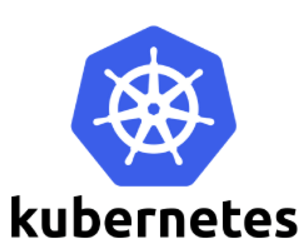How To Install Kubernetes on Ubuntu 24.04 LTS

Kubernetes, often abbreviated as K8s, is a powerful open-source container orchestration platform that automates the deployment, scaling, and management of containerized applications. In the rapidly evolving world of DevOps and microservices architectures, Kubernetes has emerged as a critical tool for efficiently managing and orchestrating containers across multiple hosts.
What is Kubernetes?
At its core, Kubernetes is designed to simplify the deployment and operation of complex, distributed systems. By abstracting away the underlying infrastructure, Kubernetes enables developers and operations teams to focus on the application itself, rather than worrying about the intricacies of the deployment environment.
Advantages of Kubernetes
Kubernetes offers several key benefits, including scalability, allowing applications to scale up or down based on demand; flexibility, supporting a wide range of container runtimes and integrating with various tools and services; and automation, simplifying the management of containerized workloads through declarative configuration and self-healing mechanisms.
Prerequisites for Installation
System Requirements
Before installing Kubernetes on Ubuntu 24.04 LTS, ensure that your system meets the minimum hardware requirements. A basic setup requires at least 2 CPUs, 2 GB of RAM, and 20 GB of storage per machine. Additionally, a stable network connection and internet access are necessary for downloading packages and communicating between nodes.
Installing Required Packages
To begin the installation process, you’ll need to install a few essential packages and tools on your Ubuntu system. These include apt-transport-https, ca-certificates, curl, and gnupg. Update your package lists and install these dependencies using the apt package manager.
Step-by-Step Installation Guide
Updating the System
Before proceeding with the Kubernetes installation, it’s crucial to update and upgrade your Ubuntu packages to ensure you have the latest security patches and bug fixes. Run the following commands to update your system:
sudo apt update
sudo apt upgrade -yInstalling Docker
Kubernetes requires a container runtime, and Docker is a popular choice. To install Docker on Ubuntu 24.04 LTS, follow these steps:
- Add the Docker GPG key and repository:
curl -fsSL https://download.docker.com/linux/ubuntu/gpg | sudo gpg --dearmor -o /usr/share/keyrings/docker-archive-keyring.gpg
echo "deb [arch=amd64 signed-by=/usr/share/keyrings/docker-archive-keyring.gpg] https://download.docker.com/linux/ubuntu $(lsb_release -cs) stable" | sudo tee /etc/apt/sources.list.d/docker.list > /dev/null- Update package lists and install Docker:
sudo apt update
sudo apt install docker-ce docker-ce-cli containerd.io -y- Verify the Docker installation:
sudo docker run hello-worldInstalling Kubernetes Components
With Docker installed, you can now proceed to install the Kubernetes components. Start by adding the Kubernetes GPG key and repository:
sudo curl -fsSLo /usr/share/keyrings/kubernetes-archive-keyring.gpg https://packages.cloud.google.com/apt/doc/apt-key.gpg
echo "deb [signed-by=/usr/share/keyrings/kubernetes-archive-keyring.gpg] https://apt.kubernetes.io/ kubernetes-xenial main" | sudo tee /etc/apt/sources.list.d/kubernetes.listUpdate package lists and install the Kubernetes components kubeadm, kubelet, and kubectl:
sudo apt update
sudo apt install kubeadm kubelet kubectl -yConfiguring Kubernetes with kubeadm
With the Kubernetes components installed, you can now use kubeadm to perform the initial configuration of your cluster. First, disable swap to ensure Kubernetes functions properly:
sudo swapoff -a
sudo sed -i '/ swap / s/^\(.*\)$/#\1/g' /etc/fstabNext, initialize the cluster using kubeadm init:
sudo kubeadm init --pod-network-cidr=10.244.0.0/16After initialization, follow the instructions provided by kubeadm to set up your kubectl configuration:
mkdir -p $HOME/.kube
sudo cp -i /etc/kubernetes/admin.conf $HOME/.kube/config
sudo chown $(id -u):$(id -g) $HOME/.kube/configJoining Worker Nodes
If you have additional machines to use as worker nodes, you can join them to the cluster using the command provided by kubeadm after initializing the master node. The command will look similar to:
sudo kubeadm join <control-plane-host>:6443 --token <token> --discovery-token-ca-cert-hash sha256:<hash>Post-Installation Tasks
Verifying the Installation
After completing the installation and joining any worker nodes, verify that your Kubernetes cluster is functioning correctly. Use the following commands to check the status of nodes and pods:
kubectl get nodes
kubectl get pods --all-namespacesDeploying a Sample Application
To further test your Kubernetes setup, deploy a simple application like Nginx. Create a deployment using the following command:
kubectl create deployment nginx --image=nginxExpose the deployment as a service:
kubectl expose deployment nginx --port=80 --type=LoadBalancerVerify that the Nginx pod is running and the service is accessible:
kubectl get pods
kubectl get servicesTroubleshooting Common Issues
Common Errors during Installation
If you encounter errors during the installation process, some common issues include:
- Insufficient privileges: Ensure you are running commands with
sudoor as the root user. - Firewall restrictions: Check that the necessary ports (e.g., 6443, 10250) are open and accessible.
- Incompatible versions: Verify that you are installing compatible versions of Kubernetes components and dependencies.
Debugging Cluster Problems
If you experience issues with your Kubernetes cluster after installation, there are several ways to diagnose and debug the problems:
- Check logs: Use
kubectl logsto view logs for specific pods or containers. - Describe resources: Use
kubectl describeto get detailed information about pods, services, or other resources. - Monitor events: Use
kubectl get eventsto view cluster events and identify potential issues.
Congratulations! You have successfully installed Kubernetes. Thanks for using this tutorial for installing the Kubernetes management containerized workload on Ubuntu 24.04 LTS system. For additional help or useful information, we recommend you check the official Kubernetes website.